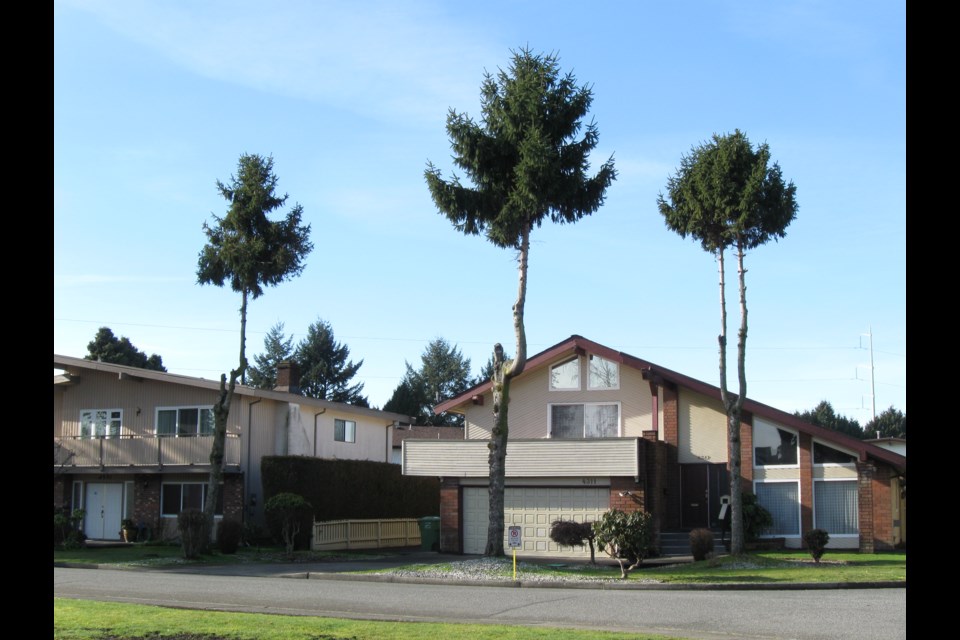There’s the SPCA, the Society for the Prevention of Cruelty to Animals – why isn’t there also an organization to ensure that trees are not treated cruelly? It’s evident that here in Richmond, trees are tormented and abused more often than you might think. Incredibly, there’s rarely a concern for the consequences. The tormentor doesn’t care about the tree and, if caught, evidently doesn’t mind paying a fine, no matter how stiff.
Recently trees were badly maimed on Deerfield Crescent and Bridge Street, where they even removed a nest. The perpetrators of such heinous deeds can no longer plead ignorance because there’s continual discussion, reported in the local, national and international media, regarding the important role of trees in the community – and the community consists of wildlife as well as people.
A more specialized picture is found in the studies conducted by scientists such as UBC’s Prof. Suzanne Simard on the subject popularly called the secret life of trees. After reading what’s been written by Simard (“Finding the Mother Tree: Uncovering the Wisdom and Intelligence of the Forest”) and Peter Wohlleben (“The Hidden Life of Trees”), I have to conclude that trees are far more community-minded than humans – they look out for one another, they cooperate with other plants, they don’t commit crimes.
When it comes to helping wildlife, trees are better at it than we are. Trees encourage biodiversity, which is vital. Trees and wildlife live together in symbiosis, they have a mutually beneficial relationship. They meet one another’s needs. Wildlife – be it insects, birds or small mammals – helps distribute the tree’s seeds, and the tree in turn offers food and shelter to wildlife. The flowers and fruit of the tree nourish wildlife, and its leaves, branches and trunk provide places to eat, rest, nest, hide and sleep.
I often marvel at how skilled birds are when it comes to constructing their nests. We try to help by building birdhouses and nest boxes to attract birds to our area, and most cavity nesters (such as chickadees and house sparrows) will use these boxes. However, man-made boxes are like prefab houses – a proper nest, assembled by the bird itself, is by far the best solution. For birds to build their own nests there must be trees offering the right construction materials (native trees) and suitable branches (not delimbed).
For years I’ve been watching crows preparing their nests. I used to leave the small twigs that dropped on the ground, thinking the crows would be grateful. How naive of me! No crow would touch them! They weren’t fresh. The crow carefully inspects every potentially useful twig on the tree, breaking and dropping several before it finally flies off with the choicest piece in its beak.
And how do trees benefit us? The list is long. To cite only a few examples: trees play a part in cleaning the air we breathe; during the summer they lower the ambient temperature by providing shade; and throughout the year they connect us to the physical world, all of which is beneficial to our health.
Trees are helpful by nature. When I’m being fanciful, I imagine them saying, “Your wish is my command.” I feel humble in their presence. The idea of tormenting trees horrifies me.
Sabine Eiche is a local writer and art historian with a PhD from Princeton University. She is passionately involved in preserving the environment and protecting nature. Her columns deal with a broad range of topics and often include the history (etymology) of words in order to shed extra light on the subject.

.jpg;w=120;h=80;mode=crop)

